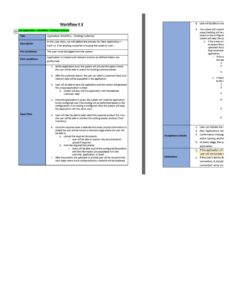A functional requirement specification (FRS) document template is a document that acts as a blueprint for software development. It defines the functional requirements of a software system, which include the system’s functions, inputs, outputs, and performance requirements. An FRS is essential for successful software development, as it ensures that all stakeholders are on the same page about the system’s functionality and goals. Without a clear and complete FRS, software development can be a chaotic and ineffective process.
There are many different FRS templates available, and the best one for a particular project will depend on the size and complexity of the system being developed. However, all FRS templates should include the following sections:
The Software System Overview
This section describes the purpose, scope, and boundaries of the software system. It also includes a list of the system’s stakeholders and their roles in the development process.
The software system overview is important because it provides a high-level understanding of the system’s purpose and goals. This information is essential for making informed decisions about the system’s design and implementation.
The functional requirements section describes the detailed functionality of the software system. This section includes a list of all the system’s functions, inputs, outputs, and performance requirements. The functional requirements section is important because it provides a clear and complete definition of the system’s functionality. This information is essential for ensuring that the system meets the needs of its users.
The Non-Functional Requirements
The non-functional requirements section describes the system’s quality attributes, such as reliability, performance, and security. These requirements are important because they ensure that the system meets the necessary quality standards. The non-functional requirements section is important because it ensures that the system meets the necessary quality standards.
The development process section describes the process that will be used to develop the software system. This section includes a description of the development methodology, the development tools, and the schedule. The development process section is important because it provides a roadmap for the development process. This information is essential for ensuring that the system is developed on time and within budget.
Conclusion
An FRS is an essential tool for successful software development. It provides a clear and complete definition of the system’s functionality and goals. This information is essential for ensuring that the system meets the needs of its users and stakeholders. A well-written FRS can help to reduce the risk of misunderstandings and delays during the development process. It can also help to ensure that the system is developed on time and within budget.

